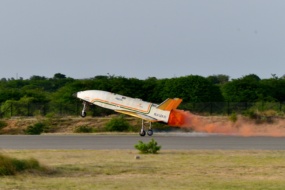Europe’s long-delayed Ariane 6 rocket will make its debut launch attempt on July 9, ESA Director General Josef Aschbacher announced Wednesday at the ILA Berlin Air Show.
Mind the gap: The heavy-lift rocket is a successor to the now-retired Ariane 5, which made its final flight in July after 30 years of service. Extensive delays in the Ariane 6 program left Europe without an independent launch capability after Arianespace also lost access to Russia’s medium-lift Soyuz after Russia’s invasion of Ukraine.
Arianespace’s lightest rocket, Vega C, also suffered setbacks after a launch failure in December 2022.
There was never supposed to be a gap in European launch capability. Ariane 6 was scheduled to enter service in 2020, years before Ariane 5’s retirement.
Developing the rocket cost ESA about €4B ($4.4B), according to the BBC. In November, European Spaceflight reported that ESA member states agreed to subsidize Ariane 6’s operations to the tune of €340M ($369.7M) per year to make it competitive.
Nuts and bolts: Ariane 6 comes into two varieties:
- The basic Ariane 62 with two solid strap-on boosters, and
- The more powerful Ariane 64 with four boosters.
The rocket is single-use, but features a re-ignitable Vinci upper stage that can dispense payload into various orbits. Arianespace has already sold 18 launches to Amazon to launch its Kuiper constellation (which will also be subsidized by European taxpayers).
“With 30 missions in our order book, Ariane 6 has already gained the trust of institutional and commercial customers,” Arianespace CEO Stéphane Israël said in a statement. “We are preparing to make Ariane 6’s second launch by the end of the year, followed by a steady rise to around ten launches a year once we reach cruising speed.”
What’s next: The rocket still has to complete a wet dress rehearsal—a pre-launch test during which technicians will fuel it and run it through the pre-launch sequence, stopping just before the engine ignition.




